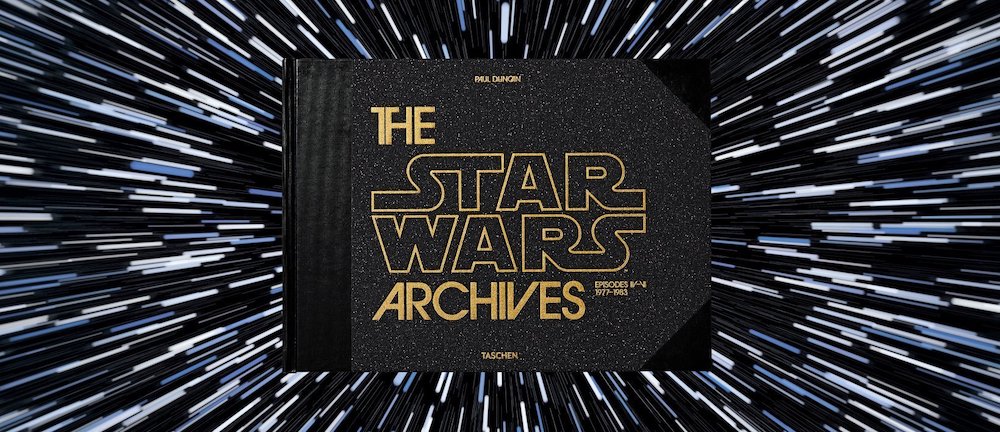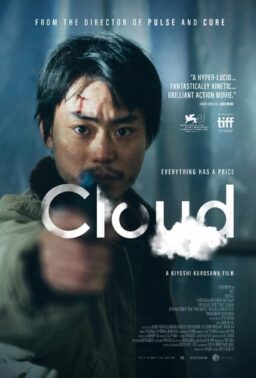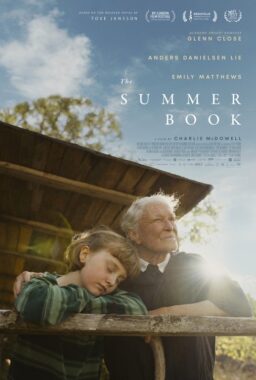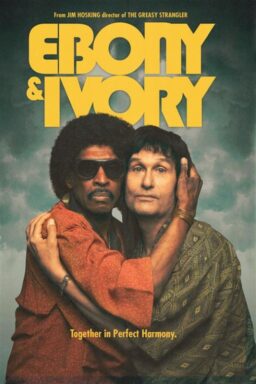For anyone younger than twenty in 1977, the first “Star Wars” movie came like a bolt from outer space, revolutionary in its blend of drama, mythology, and special effects. “I love kids, and I think movies are really for young people because films can help them or shape their lives,” says George Lucas, the “onlie begetter” of this extraordinary sci-fi series. Peter Jackson, whose “Lord of the Rings trilogy” also touched that chord, has called Lucas “the Thomas Edison of the modern film industry.”

Dozens of books have been devoted to Star Wars and its various offspring and sequels, but trust Taschen to create the most comprehensive guide imaginable for the first three films. Diehard fans will swoon over the 1,232 illustrations and minuscule detail concerning the technical challenges that faced Lucas and his crew during that seven-year period. Younger filmgoers who have been reared on “Star Wars” Episodes I, II, and III may feel that characters like Ewan McGregor’s Obi-Wan, Liam Neeson’s Qui-Gon Jinn, and Natalie Portman’s Padmé should have been featured. As the ever-reliable editor, Paul Duncan, explained to me in an email, however: “From a practical point of view it was easier to do three films, and it made sense to cover it as a trilogy over a short period of time. When I was writing it, I also realized that it made poetic sense too – the first film was made against the odds and became a phenomenal success despite Lucas’s disappointment with it. The second film was another trial by fire as cost overruns and delays almost forced Lucas to sell ‘Star Wars’ back to Fox – but ‘The Empire Strikes Back”s success helped to kickstart Lucasfilm as an independent entity.”
Duncan offers an excellent survey of Lucas’ career up to 1976, when he was the first Vice-President of Francis Coppola’s American Zoetrope, revealed a distinct talent for drawing, and followed Coppola’s advice to write his own screenplays. His friends and contemporaries in San Francisco included Walter Murch (his first editor), Michael Ritchie, and John Korty. All were non-conformists as far as Hollywood and the studio system were concerned. Although the book includes a valuable interview with sound guru Ben Burtt, there is scant mention of the Dolby Stereo, which enhanced the 70mm experience to such a degree that Alan Ladd Jr., then President of 20th Century Fox, issued a directive to theatres saying that if they wanted “Star Wars” in 70mm, they must be equipped for Dolby Stereo.

Lucas initially described “Star Wars” as a blend of “2001: A Space Odyssey,” “Lawrence of Arabia,” and James Bond. The film began life as a 14-page typed treatment in May of 1973. Lucas had spent four years trying to get John Milius’ “Apocalypse Now” script off the ground, and when that failed (to be taken up, with historic consequences. by Coppola), he worked night and day to develop Star Wars, to retain control of the property despite financial setbacks, and to assemble a team of brilliant designers and technicians including Joe Johnston, Ralph McQuarrie, John Barry, and cinematographer Gilbert Taylor.
A film buff to his fingertips, Lucas paid homage to directors like Fellini, Kurosawa and Fritz Lang (C-3PO resembles Brigitte Helm’s female robot in “Metropolis”). He wanted music in the tradition of Erich Wolfgang Korngold or Gustav Holst, and followed Steven Spielberg’s advice to commission John Williams to write the score.

“Star Wars” and its sequels proved labor-intensive because every device and every character had to be designed with meticulous care as well as inventiveness. “The ‘Star Wars’ films are basically visual movements with music,” notes Lucas, and he applied himself indefatigably to the task. He established Industrial Light and Magic, which would become the preeminent facility for CGI and special effects on so many blockbusters beyond “Star Wars,” notably “Jurassic Park.” And he took merchandising to an altogether new level. Every kid worth their salt at the turn of the 1980s had a bedroom packed with “Star Wars” figurines.
Although the stills and designs remain the glory of this massive, 13-pound tome, Paul Duncan’s three-day conversation with Lucas yields so much more about the creative process than the shy mogul has ever spoken of before. “Most of this filmmaking effort,” he confides, “is so I can create a dream, a dream I’ve had for a long time, which is to build a research retreat for film.” Thus was born Skywalker Ranch, nestled in the countryside of Marin County.
While movie critics have never considered George Lucas as an auteur, he retains an iconic status as a fount of entertainment, creator of a fantasy world as resonant as those of J.R.R. Tolkien, C.S. Lewis or J.K. Rowling. Paul Duncan’s sterling endeavor pays him the tribute he richly deserves.











